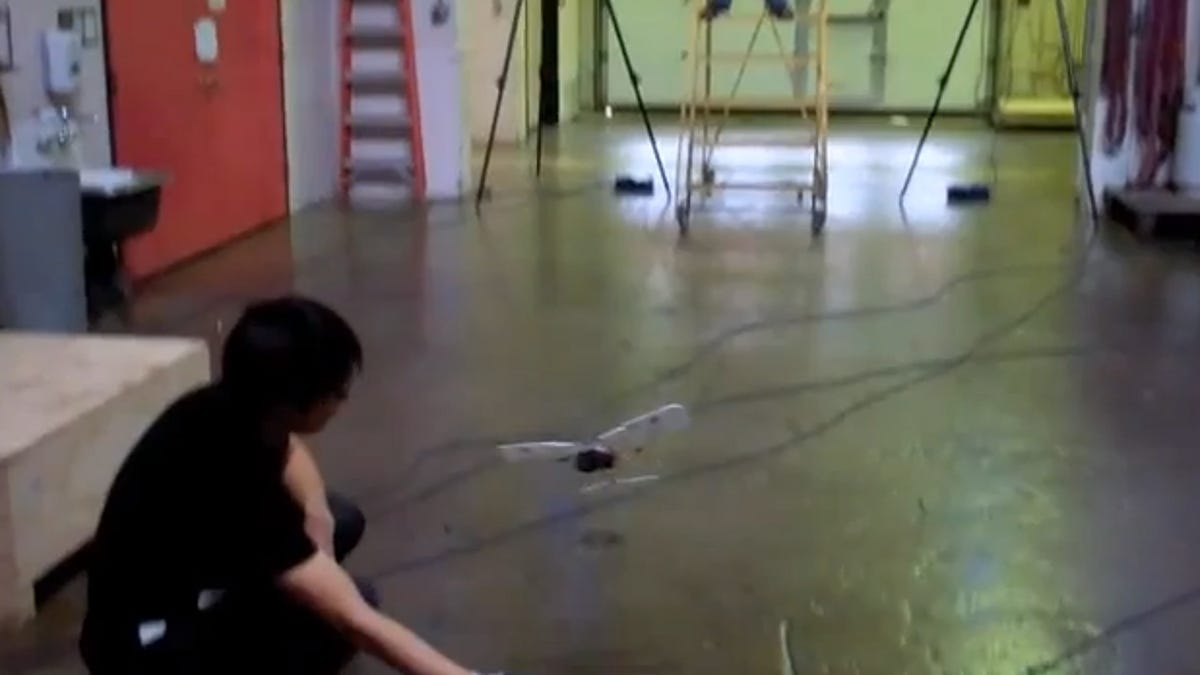Researchers build robot bird that can land on your hand
The U.S. Air Force has funded a research project that attempts to determine how to build small flying robots that can have high degrees of avian-like control.

With all the James Bond theme song-playing and tower-building quadrocopters these days, it's a little hard to get excited about new personal-size automated aerial projects. But how can you not get worked up by a bird robot that can cross a room and land gracefully on someone's hand?
Aerospace engineering researchers at the University of Illinois at Urbana-Champaign have "duplicated the control functions that allow birds to successfully perform a soft landing--in this case, perching on a human hand."
The above video's a bit scientific for the average layman (read: me) but suffice it to say, the researchers -- Soon Jo Chung, Aditya Paranjape, and Joseph Kim -- have created a micro-aerial vehicle (MAV) that can fly nimbly across a room and then pull up at just the right moment for a soft landing at a specific place, or on someone's hand.
"Because the wings of ornithopters--birds or aircraft with flapping wings--are inherently capable of being reoriented, this capability can be used for controlling and maneuvering the aircraft in a gliding phase, thereby eliminating the need for additional traditional actuators," the university wrote in a press release. "Gliding is an effective way to conserve energy while soaring, descending, and landing."
In an academic abstract (PDF), Chung, Paranjape, and Kim wrote that their work was inspired by growing interest in the development of "bio-inspired aircraft." But rather than following the traditional path of using insects as their model, the three decided that birds would be a better place to start. That's because, they write, birds can both fly by flapping their wings, and by gliding. As a result, the guiding principle of their research was that the "maneuverability and control efficiency of avian flight can be replicated by applying their actuation and control principles to advanced MAVs designed on the size scale of small birds."
It turns out that this project was not inspired solely by academic curiosity. In fact, there appears to potential military application, which is probably why the work was funded by the Air Force Office of Scientific Research.
"There's a lot to learn from bio systems, Chung, who originally wanted to study the flying patterns of bats, said in a University of Illinois story about the project. "Bats can fly with damaged wings. They are so agile and highly maneuverable; they can make rapid 180-degree turns autonomously and they can fly indoors without colliding with obstacles. These qualities are desirable for small aircraft that could be used in surveillance, particularly in urban settings where obstacles hamper movement and satellite control is blocked."

